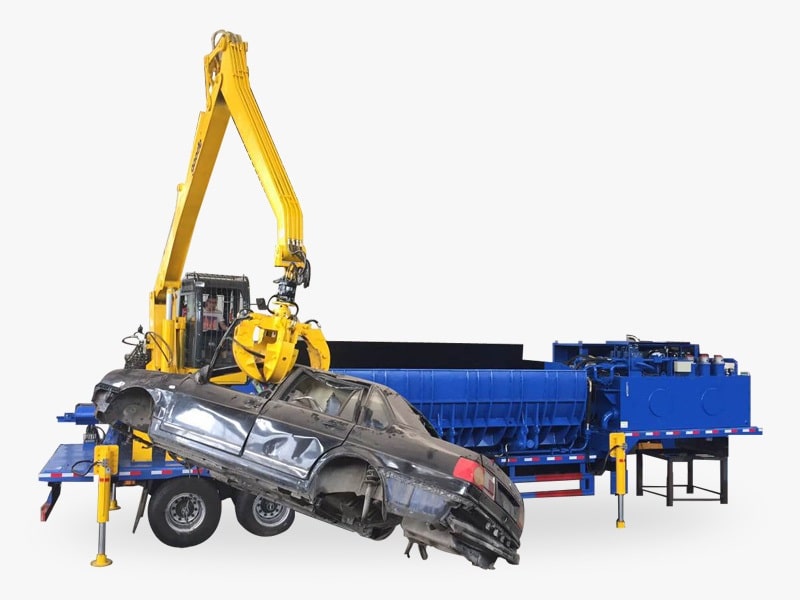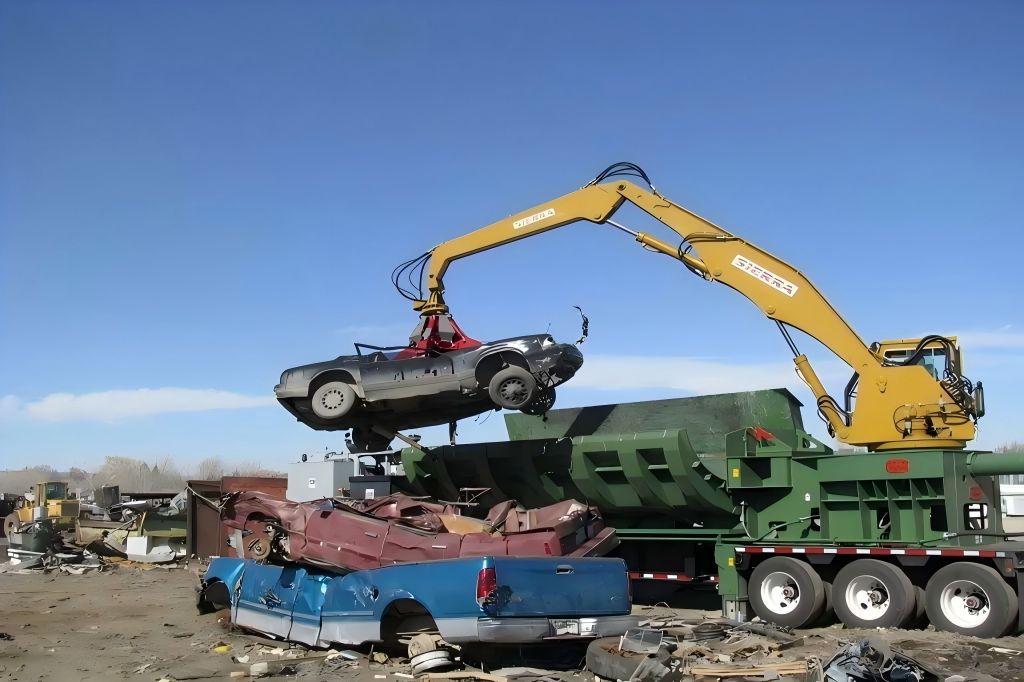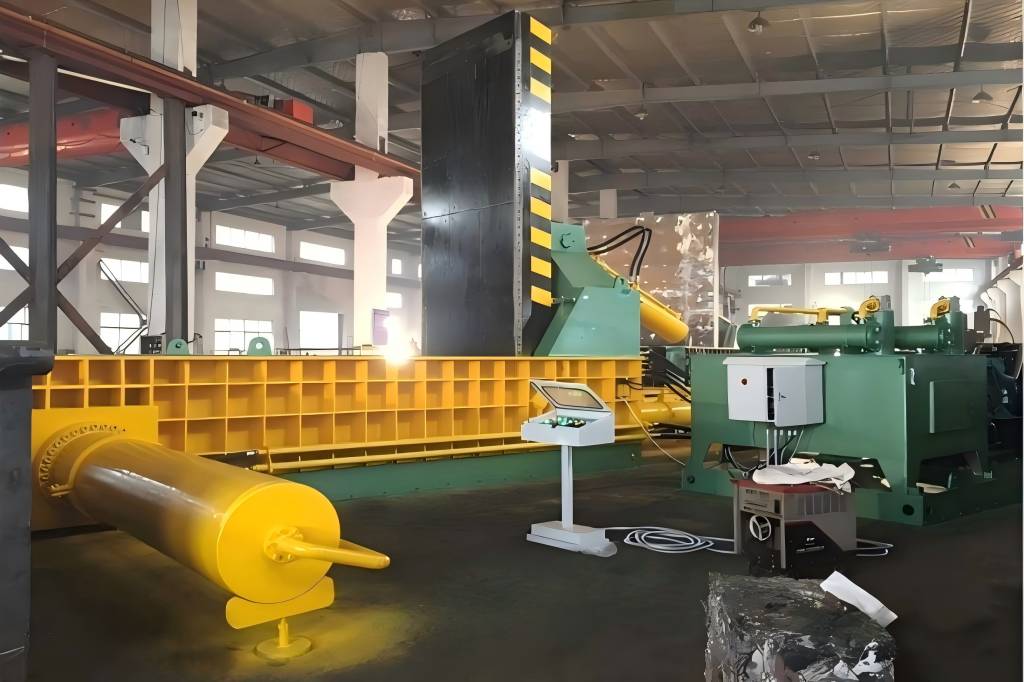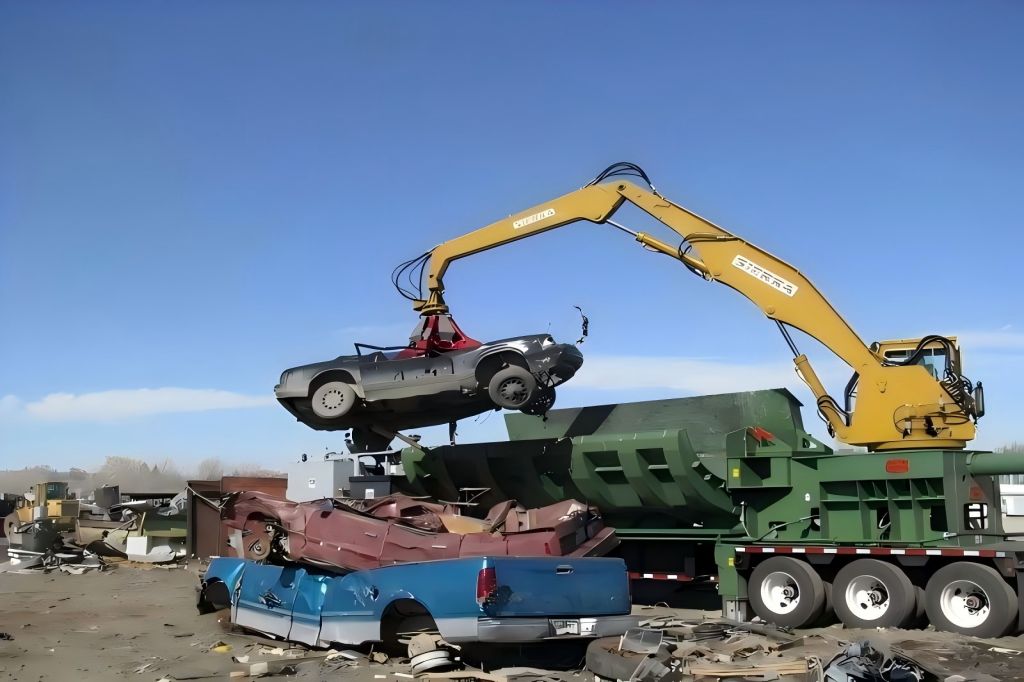Operating a car baler can be both a rewarding and challenging task. Car balers are essential machines in the recycling and scrap metal industries, transforming end-of-life vehicles into compact, manageable bales for transport and further processing. For beginners, understanding how to use a car baler safely and effectively is paramount.
This guide covers the key steps, safety protocols, and tips for optimal operation to ensure a successful start in the world of car baling.
Understanding the Basics of a Car Baler

A car baler works by compressing vehicles into compact bales, making it easier to store, transport, and recycle scrap metal. These machines come in various types, including horizontal, vertical, and portable models, each designed to cater to different volumes and scales of operation. Knowing the type of baler you are using and its specific functionalities is the first step in mastering its operation.
1. Safety Comes First
The primary concern while operating a car baler should always be safety. If not utilized properly, these machines’ strength might make them quite deadly. It is important to give careful thought to the following safety factors:
- Wear PPE, or personal protective equipment: The proper PPE, such as steel-toe boots, hard hats, gloves, and safety goggles, should always be used by operators. These items help protect against flying debris, accidental slips, and unexpected mechanical issues.
- Maintain a Clean Work Area: Ensure that the space around the baler is free of clutter and any potential tripping hazards. Accident risk is decreased in a clean work environment.
- Understand Emergency Protocols: Be familiar with the machine’s emergency stop functions and know where the emergency shutdown buttons are located. In case of an unexpected issue, being able to stop the machine quickly is essential.
- Never Operate Alone: If possible, always have another trained person nearby when running the baler. This extra set of eyes can be invaluable for spotting potential problems or assisting during emergencies.
2. Pre-Operation Checklist
Before using the car baler, it is critical to conduct a thorough inspection to ensure the machine is in proper working condition. The pre-operation checklist should include:
- Check for Leaks: Inspect the hydraulic system and other components for any fluid leaks. Leaks can indicate potential mechanical failures and should be addressed immediately.
- Inspect Blades and Compression Parts: Ensure that the blades and compression mechanisms are sharp and free from any damage or debris that could impede the baling process.
- Test Safety Features: Confirm that all guards, emergency stop devices, and safety switches are operational.
- Review Power and Pressure Levels: Confirm that the baler is receiving the proper power supply and that the pressure settings are within recommended limits.
3. Proper Preparation of Vehicles
Preparing the vehicle for baling is a crucial step that cannot be overlooked. To guarantee the security and effectiveness of the baling procedure, cars must be devoid of specific parts:
- Drain All Fluids: Before placing a car into the baler, drain all fluids, including oil, fuel, coolant, and brake fluid. These substances can be flammable and hazardous when compressed.
- Remove Batteries: Car batteries can pose a significant risk if left in the vehicle during baling. They have the potential to rupture under pressure or leak acid, which might cause serious harm to people and destroy the equipment.
- Strip Non-Metallic Components: Remove seats, upholstery, and other non-metal materials that may interfere with the recycling process or lead to uneven bales.
- Detach Large Parts: Components such as the engine or transmission may need to be removed, depending on the machine’s capacity and your recycling goals.
4. Operating the Car Baler
Once safety checks and vehicle preparations are complete, it’s time to operate the car baler. Here are step-by-step instructions for a typical baling process:
- Position the Vehicle: Use a forklift or other lifting device to place the car securely into the baling chamber. Ensure that the vehicle is centered and aligned correctly to avoid uneven compression.
- Activate the Baler: After turning the machine on, adjust the pressure level according to the kind of vehicle being squeezed. The manufacturer’s directions should be followed to make sure you are utilizing the correct settings.
- Monitor the Process: Watch the compression cycle carefully. If you notice any irregularities such as jamming or uneven pressure distribution, stop the machine immediately and inspect for any issues.
- Wait for the Cycle to End: Before attempting to remove the compacted bale, let the baler complete its whole cycle. Intervening prematurely can lead to safety risks and incomplete baling.
- Remove the Bale Safely: Once the cycle is complete, use a forklift or crane to remove the compressed bale from the machine and transport it to the appropriate storage area.
5. Post-Operation Protocols
After completing a baling cycle, post-operation checks are important for both the machine’s maintenance and operator safety:
- Examine the machine: Look for any indications of wear or damage that might have happened while it was operating. Address any minor issues immediately to prevent more significant problems later.
- Clean the Baler: Remove any debris left in the chamber and ensure that the machine is clean. A buildup of debris can cause mechanical issues over time.
- Log the Operation: Maintain records of each use, including the type and number of vehicles processed, the operators involved, and any maintenance performed. Finding trends or persistent problems that might require attention can be aided by this log.
6. Typical Errors and Their Prevention
Even seasoned operators can make blunders, but some mistakes are particularly common among novices. The following are common mistakes to avoid:
- Rushing the Process: Patience is crucial when operating a car baler. Rushing through the baling cycle can lead to machine jams, uneven compression, and safety hazards. Always give the machine time to finish its cycle.
- Overloading the Baler: It may be tempting to fit as much material as possible into the baler, but overloading can cause significant damage to the machine and result in poor-quality bales. Always abide by the load capacity recommendations provided by the manufacturer.
- Skipping Maintenance Checks: Regular maintenance is essential for the longevity and efficiency of your car baler. Ignoring maintenance checkups might result in expensive repairs and unplanned malfunctions.
- Ignoring Noise and Vibration Changes: If the machine starts making unusual noises or vibrations, don’t ignore it. These changes often indicate an underlying issue that needs immediate attention.
7. Tips for Effective Operation
For those looking to optimize their baling operations, consider the following tips:
- Create a Routine: To make sure nothing is missed, create a regular pre- and post-operation check schedule.
- Remain Current: Remain current with the latest advancements in auto baler technology as well as industry best practices. You can work safer and more effectively if you know this information.
- Train Regularly: Participate in ongoing training sessions to stay sharp and improve your skills. Many manufacturers offer advanced training workshops that can provide deeper insights into operating and maintaining your machine.
- Collaborate with Colleagues: If possible, share insights and tips with other operators. You can enhance your own methods and steer clear of typical hazards by taking note of other people’s experiences.
Conclusion
Operating a car baler for the first time can be daunting, but with proper training, preparation, and attention to safety, beginners can quickly become proficient. Remember that safety always comes first, and following these guidelines will help you operate your car baler both safely and effectively.
By taking the time to understand the machine, prepare vehicles properly, and follow established safety protocols, you’ll set yourself up for successful and efficient baling operations.




